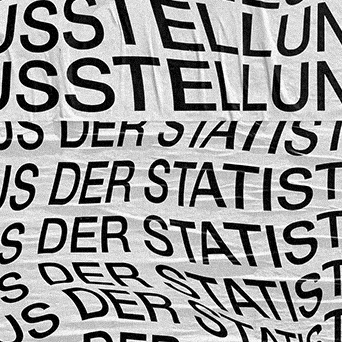How Partnerships with Aid Organisations Improve Responsible Gambling Tools
Hold on—this is actually important for anyone starting to play online: operators who partner with reputable aid organisations build better safety nets for players. This piece cuts straight to practical steps and examples so you can recognise useful tools, spot window-dressing, and act on help quickly. The first section shows why partnerships matter in practice, and the next section maps the specific tools you should expect to see from a responsible operator.
Here’s the thing: a partnership isn’t just a logo on a footer; it’s a set of commitments that change how an operator designs limits, verifies identity, and reacts when a player asks for help. That matters because well-structured partnerships introduce independent accountability and localised support options for users, which in turn reduce harm. Next, I’ll outline common partnership models so you know which ones deliver real value.

Partnership models that actually help players
Wow! There are three practical models you’ll see in the wild: advisory partnerships, referral partnerships, and embedded-services partnerships, and each has a different impact on tools and outcomes. Advisory partnerships usually involve NGOs reviewing policies and advising on best practice; referral partnerships mean the operator sends players to an external helpline; embedded-services partnerships integrate third-party self-exclusion or screening tools straight into the site. Understanding these models helps you evaluate a casino or bookmaker’s seriousness about player protection, and the next paragraph explains what to ask when you spot a claimed partnership.
Ask two quick questions when you see a partner listed: what does the partner actually do, and is there measurable follow-up (reports, contact stats, or program evaluations)? Operators that publish transparency reports or publish contact workflows are usually doing more than window-dressing. If an operator refuses to clarify, treat the partnership as cosmetic and look for another site; below I’ll give a checklist of practical indicators to check on sign-up.
Concrete tools driven by partnerships
Partnerships produce real features—ideally—and the typical list looks like this: self-exclusion registries integrated with the site, mandatory pre-play screening tools, deposit and loss limit systems tied to identity, outbound outreach from trained counsellors, and clear referral routing to local services. Operators in strong partnerships also run staff training with the partner so frontline agents can spot risk signs and escalate correctly. These tools are what actually reduce harm, and next I’ll show how a real operator can integrate them end-to-end.
To illustrate, imagine a mid-size operator that integrates a third-party self-exclusion API: when a player requests a time-out, the API updates a national registry, blocks bets across partner sites, and triggers automatic contact from a trained counsellor within 48 hours. That chain—from player action to third-party follow-up—is what you should look for, and the following section describes the technical and governance checks that make that chain trustworthy.
Technical, governance and verification checks
Short checklist first: is the partner independent, is data handling compliant with local privacy law, are escalation protocols auditable, and are outcomes measured? These four checks prevent misuse and ensure players’ privacy is protected while allowing effective intervention. Next I’ll unpack each check and say what to expect in plain terms so you can verify an operator’s claims.
Independence means the aid organisation can publish findings or pull support if the operator misbehaves; it’s a red flag when partners are owned by the same corporate group. Data handling requires clear consent flows, anonymisation for reporting, and compliance with Australian privacy norms—operators should spell this out in their RG policy. Escalation protocols need names and timeframes: who calls, who texts, within how many hours. Finally, measurable outcomes—referral counts, self-exclusion rates, post-intervention follow-ups—are signs of a mature program rather than a marketing claim, and the next section shows practical examples of operator/aid org collaborations you can model your expectations on.
Three short case examples (practice, not theory)
Case A: a regional operator runs weekly staff training with a local gambling help charity and publishes a quarterly summary showing the number of interventions and average time-to-response; this gives real accountability and lets players know their problem reports are handled. That transparency is what separates good programs from token gestures, and the next case shows how embedded tech can scale that response.
Case B: a medium-sized online casino integrates a self-assessment quiz from a well-known aid organisation directly into onboarding, blocks bonus credit until a player has completed the quiz if high-risk markers appear, and offers an automatic 24-hour time-out option; this reduces impulsive deposit behaviour immediately. Those immediate technical guards demonstrate how partnerships can be operational rather than just advisory, and the next example shows community-level outreach as a complement.
Case C: a platform partners with a national helpline to fund community outreach—free workshops at sporting clubs and resumed support sessions after a major loss event—so that help is local, practical and culturally attuned. Community outreach closes the loop between product-level safety and social support networks, which is why I believe program design needs both tech and human elements; the next section gives you a compact comparison of tools to weigh when choosing where to play.
Comparison: Responsible-Gambling Tools and When They Matter
| Tool / Approach | Best for | Limitations | What to check |
|---|---|---|---|
| Mandatory pre-play screening | Early detection of risk | False positives; player friction | Validated questionnaire and opt-out stats |
| Self-exclusion registry (3rd-party) | Long-term exclusion across sites | Requires broad industry uptake | APIs, audit logs, and cross-operator coverage |
| Deposit/loss limits (identity-tied) | Immediate bankroll control | Easy to reset if limits are weak | Hard limits, cooling-off delays, documentation |
| Automated monitoring + outreach | Intervention after risky patterns | Privacy concerns and false alarms | Transparency on triggers and counsellor training |
| Community outreach & training | Prevention and de-stigmatization | Needs sustained funding | Published outcomes and program partners |
Use this table to prioritise what matters to you when choosing an operator, and know that not every tool is equally useful for every player; the next paragraph explains where to find operators that back their claims with real action.
When you want to check an operator’s credentials, look for named program partners and published performance data rather than vague statements, and consider operators that make partner resources available inside the account area so you can access help without searching the internet. A practical example of an operator that centralises tools, reporting and outreach work in one place is highlighted by many regional reviewers, and you can view live implementations directly on the operator’s public pages such as the main page to see how features are surfaced. Inspecting those pages will help you verify whether a partnership is operational or purely promotional, and the following section gives you a Quick Checklist you can use immediately.
Quick Checklist — evaluate in five minutes
- Is there a named aid organisation partner (not just a logo)? — then check for a short description of the partner’s role.
- Can you find a privacy and data-handling statement for RG tools? — if not, be sceptical.
- Are there hard limits you can set yourself (deposit, loss, session)? — test the UI to confirm.
- Is self-exclusion enforced across products (casino + sportsbook)? — cross-product enforcement matters.
- Is there a direct route to external help (helpline number, chat with counsellors)? — it should be visible inside your account.
Ticking off this checklist on sign-up keeps you protected from common pitfalls, and the next section covers those mistakes and how to avoid them in everyday play.
Common Mistakes and How to Avoid Them
- Assuming a partner logo equals protection — ask what services are delivered and how outcomes are measured, and don’t accept vague promises.
- Relying solely on voluntary cooling-off — use mandatory delays for withdrawals or limit increases where possible to prevent impulse play.
- Ignoring data privacy when signing up for screening tools — ensure the operator and partner publish how your data is used and retained.
- Believing bonuses replace treatment — promotional offers don’t address underlying harm, so prioritise help resources over chasing credits.
- Using VPNs or fake IDs to bypass limits — that escalates risk and voids protections, so play only with accurate identity details.
Avoiding these mistakes protects your money and wellbeing, and the next block answers short, practical questions players always ask when they’re deciding whether a site is safe.
Mini-FAQ
Q: How can I tell if a partnership is genuine?
A: Look for transparency: named partners, published workflows, and measurable outputs (e.g., number of referrals, anonymised follow-up rates). If an operator publishes nothing, treat the claim with caution and seek an alternative site that shares more detail; the paragraph that follows explains where to check for local support.
Q: Are third-party self-exclusion registries effective?
A: They are effective when widely adopted; a registry that covers many operators prevents simple migration from one site to another. Check coverage, API audits and whether operators commit to cross-checks during onboarding before you rely on the registry as your only protection.
Q: What immediate action should I take if I feel out of control?
A: Use account tools now—set deposit/loss limits, enable session reminders, and request a time-out or self-exclusion. Then contact a trusted aid organisation directly for counselling; the final section below gives a responsible gaming reminder and how to get help urgently.
Before closing, one more practical pointer: if you value transparency, pick operators that publish a yearly RG report or at least a short quarterly update—those numbers and explanations are a reliable signal that partnerships are more than PR. For further exploration of operator feature surfacing and examples of in-account help assets, you can check a live implementation on the main page to see how tools are presented to players and how partner resources are linked; the final paragraph wraps this up with a safety-first reminder.
18+ only. Gambling can be addictive — play responsibly. If you think you or someone you know has a gambling problem, contact your local support service (e.g., Gambling Help Online in Australia) or your national helpline immediately. Setting limits, using self-exclusion, and accessing counselling are practical first steps to reduce harm, and checking an operator’s partnership commitments helps you choose safer places to play.
Sources
Industry reports and NGO guidance on player protection; local gambling help services; operator transparency statements and public accountability reports (consulted for common practice examples).













